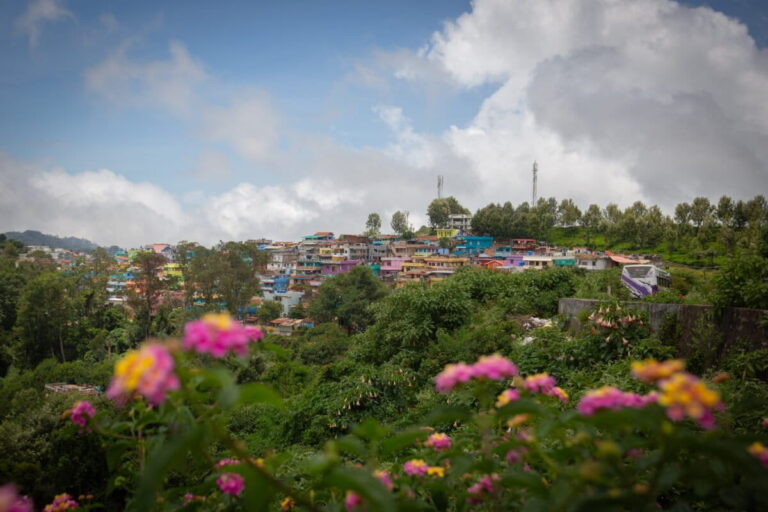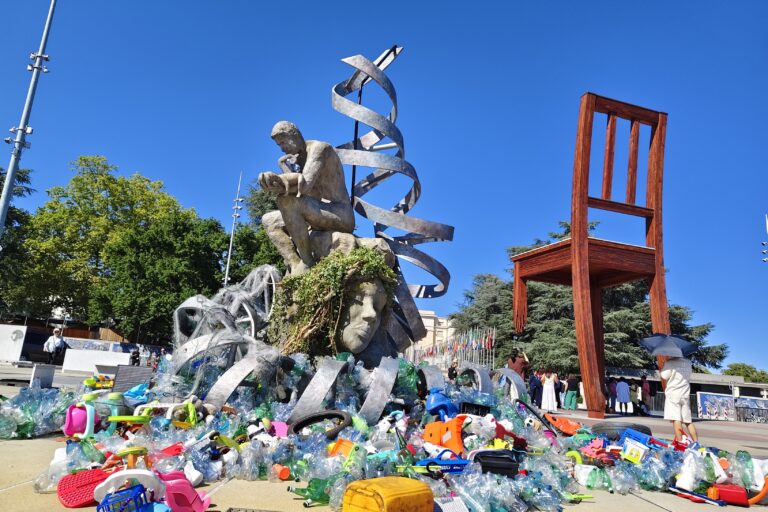- India is seeing a growing trend of start-ups that are upcycling and refurbishing damaged shoes, though footwear recycling is still at a nascent stage.
- The design complexity of footwear, along with the materials used and the labour-intensive and energy-consuming manufacturing process, make it difficult to recycle or upcycle footwear.
- The global sustainable footwear market was valued at $8.88 billion in 2022 while the traditional footwear market was valued at $409.5 billion.
Have you ever wondered where your pair of shoes end up after you discard them? While a steady but growing number of consumers are becoming aware about the afterlife of a garment, the discourse about the environmental impact of footwear waste is yet to find steady ground. Despite reports pointing out that, of the 23 billion shoes produced in a year, around 22 billion end up in landfills, circular initiatives, which focus on sustainable production to reduce waste, are few and far between in this segment.
A circular ecosystem is one that maximises the value of material resources and minimises emissions, resource use, waste and pollution. Among the many barriers preventing the development of a flourishing footwear circularity ecosystem, is the design complexity of the shoes. A report titled The Footwear Manifesto from the Massachusetts Institute of Technology, highlights how the complexity of footwear, along with the labour-intensive and energy-consuming manufacturing and a mismatch between the longevity of the material over the pair of shoes pose challenges in building a dynamic circular footwear infrastructure. A shoe comprises over 40 parts of different elements and materials, making material-recovery and breakdown, quite tedious.

Another challenge in approaching footwear with circularity is the dominance of petrochemical-based plastics in the footwear segment, as Mohammed Gofran, Head of Department, Leather Goods and Accessories Design at the Footwear Design and Development Institute, Hyderabad, points out. The main byproducts of petrochemicals used in shoes for soles are polyurethane (PU), ethylene-vinyl acetate (EVA) and polyvinyl chloride (PVC), all known for value, durability and resistance.
“The petrochemical-based product industry is very big and its presence is in all walks of life. Plastics are made from one of the byproducts of petroleum. A large number of petroleum byproducts which are available in huge quantities and are cheaply available makes them an excellent source of easily-available raw materials for plastic-based shoe soles, etc.,” Gofran tells Mongabay-India.
Petrochemicals, derived from petroleum, are deeply embedded into everyday life in the form of plastics, fertilisers, packaging, clothing, digital devices, and more, making the world dependent on the industry. Notwithstanding the toxicity petrochemical products contain, their widespread integration across industries is driven by the factors of affordable and abundant availability of raw materials.

“Be it EVA or PVC, these are non-biodegradable toxic materials, which after disintegration produce harmful material that goes into the soil,” Gofran adds. “But the fact that all these materials have higher profit margins apart from the flexibility of usage and value over traditional materials (rubber and leather in this case), companies prefer them over others.” A 2018 report from the International Energy Agency, spotlights the dependency of humankind on petrochemicals that have penetrated our everyday life, surroundings, as well as what we eat.
Absence of a robust recycling system
In recent years, footwear made of vegan material, recycled plastic bottles or upcycled rubber tyres with cork soles, has introduced a new vocabulary for footwear design among conscious fashion-goers. At the same time, prominent global sneaker brands have started recycling programmes in the United States and European countries to give a new lease of life to discarded shoes. However, the footwear recycling industry globally is not as developed and dynamic as the fashion recycling industry, with the Indian textile recycling market poised to reach Rs. 3,117 crores ($375 million) by 2028.
What makes recycling footwear difficult is that it comprises over 40 parts, most of which are made of non-biodegradable material that may take several decades to decompose in landfills. Additionally, the glue that joins these components is believed to contaminate other recyclable components, making it tougher to break down the shoe.
Mumbai-based Greensole has been on a mission to recycle and upcycle discarded shoes and convert them into new footwear that is distributed to underprivileged children. When former athletes, Shriyans Bhandari and Ramesh Dhami, identified the issue of footwear waste back in 2013, they found themselves starting from scratch. “We had to figure out the process of recycling because there were not many players,” Bhandari, co-founder of Greensole, told Mongabay-India. “All research of breaking down different parts of the shoes and which parts to use for recycling were done in-house.”
Bhandari adds that when you upcycle a shoe, 15% of the waste is left out. “Then we thought about what to do with the waste. Today we can grind that waste and create a sheet out of it which can be used anywhere… in furniture or even electric cars. Over these years, we have grown and ventured into retail as well. However, the focus will always remain on circularity,” he adds, highlighting that incorporating recycling of footwear within the existing organisational set-up requires intent. “Greensole has been successful because that is the core purpose of the company. Otherwise, we could not have done it. We are built to solve a problem, to do upcycling and recycling and extend the lifespan of products.”

Greensole collects discarded shoes across the country through collection drives and they have joined hands with several schools in Jharkhand, Mumbai, Assam and Uttar Pradesh to donate a pair of refurbished slippers and shoes to children who need it the most. The company claims to have donated 617, 000 shoes since 2015 and 10 lakh (1 million) in total would be donated by 2025.
Footwear makeover with repair and redesign
Before launching Murtle in 2018, Hyderabad-based Shashank Pawar was in the business of manufacturing t-shirts which carried popular dialogues from Tamil movies. But during the journey, Shashank realised not all quirky dialogue-led designer t-shirts would become ‘hero’ products. The unsold stock was nothing but a mountain of waste. This wastage made him wonder if there was a way in which a product could stay longer in the value chain. Thus, Murtle began as a venture-selling footwear which offered changeable strap options to ensure the idea of “newness” stayed with consumers. The idea was working until the pandemic upended the start-up’s plan.
“We had zero business,” Pawar recalls. To stay afloat, he wrote to his customers with whom he had built relationships over time. “We asked them if they had any Murtle footwear that they would want us to repair.” And that is how the Murtle 2.0 version was born with a focus on upcycling damaged footwear. As self-taught Pawar started upskilling his craftsmen and understanding the DNA of the shoes, the confidence among consumers grew and they began sending him worn-out shoes from other brands as well.

Now, Murtle primarily champions the cause of keeping shoes away from the landfill and encourages consumers to give their footwear a second chance. Until now he has up-skilled close to 30-35 artisans. But some have left because it is a “difficult job”. “In a normal production cycle, you know what kind of footwear is coming your way. So, you can keep running the machine. However, here, you do not know what the next pair of footwear is going to be and what the next hour is going to look like,” he points out. Additionally, he mentions how he struggled to open a small unit in Agra last year because of the taboo associated with the job profile. “Many artisans left the job after a few days because they felt they were working on old footwear so they are doing the inferior job of a ‘mochi’ (cobbler),” says Pawar.
Another challenge comes from the consumer front. Upscaling footwear is a fairly new concept in India, so consumers are hesitant to pay a premium price for the service. “This is the most common question we get,” he adds. “Often consumers tell us that they have bought the shoe at Rs 1,000 but we are charging them Rs. 1,100. They don’t think it is worth it.”
Shashank then patiently takes them through the entire process of restoration to help them understand that the services Murtle offers are analogous to buying a new pair of shoes. “Because what we give them back is as good as a new pair, likely to live for two years or more… We do not want our customers to look at upcycling as a repair service,” says Shashank, adding they are now shipping out almost 1,000 pairs of upcycled shoes in a month.
Like Murtle, India is now home to a growing number of start-ups that offer services of refurbishing and upcycling footwear and bags. This new business formula may represent a subtle change in consumers’ consumption behaviour, but Shashank underlines that until large footwear manufacturers take the onus of bringing circularity to the footwear industry, changes will be slow. According to a recent report, the global sustainable footwear market is valued at $8.88 billion (Rs. 73,000 crores) in 2022, as compared to the $409.5 billion (Rs. 34 lakh crore) market for traditional footwear. So, the chasm indeed is huge to fill.
“It is difficult to introduce sustainable material in the value chain when petrochemical-based plastic materials are the dominating industry,” says Gofran. “So, we have to realise that petrochemical-based plastic products have a kind of monopoly in the market. Of course, there are many ways to replace it, but the question that looms large is, would the (footwear) industry be keen to replace plastic-based raw materials from their ecosystem?” highlighting that the non-traceability of footwear is another challenge that needs to be tackled, to develop a circular model.
Read more: Rethinking, recycling and re-loving: A peek into India’s circular fashion economy
Banner image: Greensole manufacturing unit. A growing number start-ups offer services of refurbishing and upcycling footwear and bags. Photo from Greensole.














